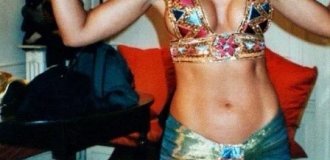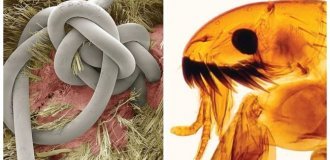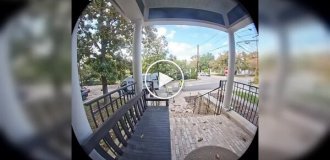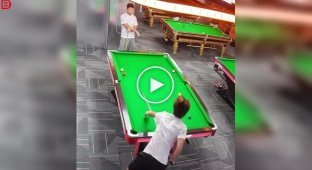The Italians' Best Saboteur: The Scirè Submarine (6 Photos)
The Italian Navy was famous for its sabotage operations during both the First and Second World Wars. A variety of means were used for covert and unexpected attacks on enemies: human-controlled torpedoes, small boats, and even submarines. During the Second World War, the submarine Scirè distinguished itself with the most effective sabotage operations. 
Scirè shortly after launch, January 6, 1938
Scirè was a submarine from the Adua series of seventeen units. She was no different from her sister ships. Her displacement was 690 tons on the surface and 858 tons underwater, her length was 60.18 m, her width was 6.45 m, and her draft was 4.7 m. She had two diesel engines with a capacity of 600 hp each and the same number of electric motors with a capacity of 400 hp. With their help, the submarine could reach a speed of up to 14 knots on the surface and up to 7.5 knots underwater.
The boat was armed with six 533 mm torpedo tubes - four on the bow and two on the stern. She also had one 100 mm deck gun and two 13.2 mm anti-aircraft machine guns.
Scirè was built at the La Spezia shipyards and entered service in 1938. Before Italy entered World War II (in June 1940), the submarine was based in the Dodecanese Islands. After the start of hostilities, the boat went to the shores of Corsica, where on July 10 it intercepted and sank a French cargo ship, having taken off its crew. In connection with France's withdrawal from the war, the Italians reoriented themselves to fighting the British, where the sabotage and reconnaissance unit, the 10th MAS flotilla, was to play a significant role. Scirè was transferred to it in mid-1940.
In August-September of the same year, the submarine was modernized for sabotage operations. The gun and two torpedo tubes were removed, the size of the superstructure was reduced, and three cylinders for carrying man-controlled Maiale torpedoes were mounted on the deck. The submarine's hull was repainted a pale greenish shade, which proved to be the most suitable for blending in with the night sky. Another camouflage measure was to paint over part of the green paint the outline of a fishing vessel, the "bow" of which was turned in the opposite direction from the actual bow of the Scirè. From September 11, 1940, the submarine was commanded by Lieutenant Commander Prince Giunio Borghese.
On September 24, Scirè was supposed to take part in the attack on Gibraltar, but turned back on the approaches to the port - the British force H had recently gone out to sea to protect another convoy. A new attempt was made on October 21. 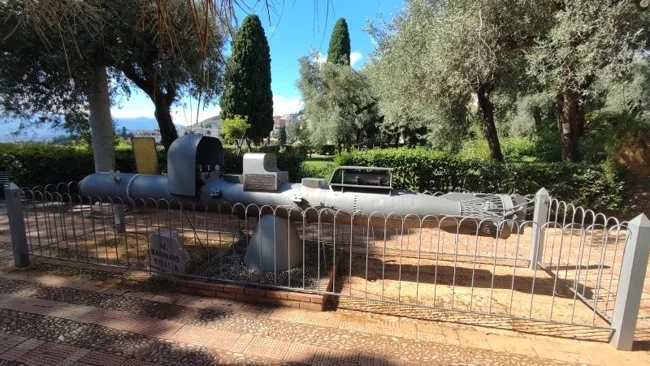
A Maiale man-controlled torpedo in Taormina, Sicily, 2021
On October 26, the boat arrived in the Gibraltar area, but was detected by a pair of destroyers 44 miles from the port and forced to dive. It was only on the 29th that they managed to enter the strait, and only after long underwater maneuvers and several attempts. At 11 a.m., the Italians went to the bottom. At 8:35 p.m., they surfaced and headed for the port, but were soon illuminated by a searchlight and dived again. Fortunately for them, the British attempts to find and sink the submarine were unsuccessful. However, Borghese was also unable to get through the barriers. So at 2 am on October 30, he lay down at a depth of 10 meters, 350 meters from the shore, and at 02:19 he launched human-controlled torpedoes.
The saboteurs who had been brought to the port with such difficulty were unable to complete the task. One Maiale sank, the second was washed ashore on the neutral Spanish coast, and the third stalled 70 meters from the battleship HMS Barham. The pilots blew it up, but did not cause any damage to the ship. After that, Scirè returned to La Spezia on the evening of November 3.
The first operation taught a serious lesson in the technical training of the sabotage unit. In addition to the breakdowns of the "maiale", the failure was also due to the fact that their operators were unable to properly rest in the cramped and stuffy space of the submarine. Therefore, the command decided to transfer the saboteurs to an interned ship in Cadiz. It was assumed that the submarine would pick up the torpedo operators there and quickly deliver them to Gibraltar, so that they would not have time to get too tired.
It was not possible to test the new tactics right away. Due to the threat of a British attack on Genoa, Scirè was deployed in an anti-submarine screen. But the attack did not happen, and the submarine returned to sabotage in May 1941. On May 22, she arrived in Cadiz for the "maiale" operators, but one of them became ill. One human-controlled torpedo had to be unloaded. The remaining two failed during the transition to the attack site. Scirè returned to base empty-handed.
The next voyage, after careful preparation and reconnaissance, began only in September. Borghese reached the port without incident, sank to the bottom and at 01:17 on September 20 launched three "maiale". All torpedoes hit their targets. The auxiliary cruiser Durham was grounded and permanently disabled, the tanker HMS Denbydale was significantly damaged (so much so that the British had to turn it into a floating warehouse), and another tanker, Fiona Shell, was sunk.
Inspired by their success, the Italians planned to penetrate the most impregnable port in the Mediterranean - Alexandria. On December 3, Scirè left La Spezia, on the 12th on the island of Leros in the Aegean Sea she picked up the "maiale" operators and on December 14 stopped at Alexandria, waiting for confirmation of the order and intelligence data. All this was received on the 17th, and at 02:15 on December 18, the submarine, having reached the minefield, submerged.
Borghese had to stay under the minefield and net barriers at a depth of 50 m, almost touching the bottom of the bay, and maneuver for ten hours. Finally, around 15:00, the Italians reached the port and at 18:40 lay down at a depth of 17 m. At 20:47, the Italians surfaced and at 21:30 released their "maiale". The success was complete. The battleships Valiant and Queen Elizabeth were heavily damaged (four and seventeen months of repairs, respectively). In addition, the tanker and the destroyer Jervis, which was moored next to it, were damaged.
Meanwhile, on the way back, Scirè was forced to surface twice, risking detection, in order to close the jammed hatches of the Maiale cylinders. Nevertheless, on December 21, Borghese reached Leros, and on the 29th arrived in La Spezia. All the participants in the expedition received various awards (the torpedo operators were captured and awarded after the armistice in 1943), and Prince Borghese was promoted. Lieutenant Bruno Zelik became the commander of Scirè. 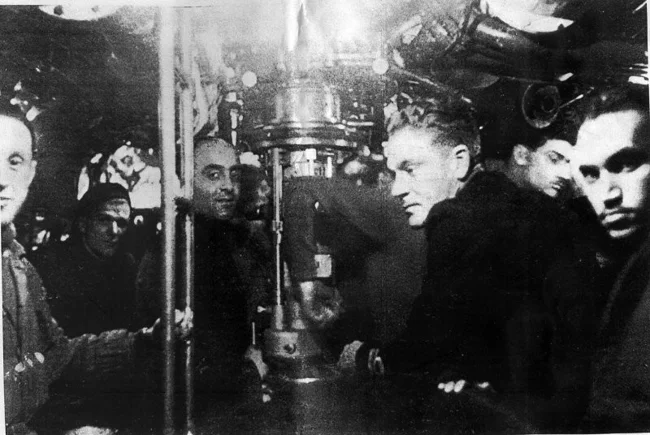
Bruno Zelik, the last commander of Scirè
Zelik and Borghese prepared the next operation only for the summer of 1942. This time the target was the port of Haifa, where the British had concentrated significant forces. However, Zelik abandoned the idea of using the "maiale", which often broke down and left the saboteurs in the hands of the enemy. He relied on a more reliable method - divers. They were supposed to plant explosives on the hulls of the ships, and then return to the submarine.
On July 27, the submarine left La Spezia, on August 2, it went to Leros for divers, and on the 6th, it went to sea. The operation was scheduled for the night of August 10-11. Scirè made contact for the last time during the day on the 10th, after which it disappeared. The Italians waited for news from it until August 18. No more messages from the submarine were received, as well as about any results of its attack on Haifa, so the command was forced to recognize the boat as missing en route to the target.
What actually happened became known much later. Scirè used the German Enigma encryption system to communicate with the command. This cipher had already been cracked by the British at that time. Having learned from intercepted messages about the raid, they deliberately let the submarine through the mouth of the port in order to block its escape route. At 10:30 on 10 August, the submarine was spotted by an aircraft and immediately attacked. The minesweeper HMS Islay dropped depth charges, which forced Lieutenant Zelik to surface. As soon as the submarine appeared above the surface, shore artillery batteries opened fire on it. The shells hit the conning tower and the bow. As a result, Scirè sank. 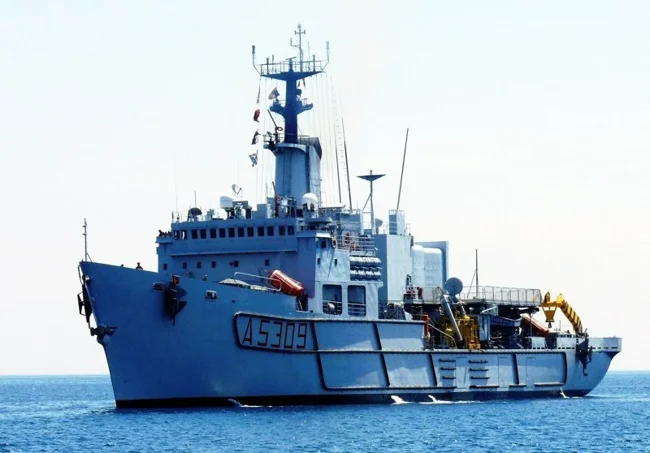
The Italian Navy salvage ship Anteo, which conducted an examination of the remains of the submarine Scirè in 1984. Photo taken in Cartagena on May 25, 2011
Just in case, HMS Islay passed over the place where the submarine disappeared and dropped several more depth charges. On August 14, the bodies of two Italian submariners were found on one of the beaches near Haifa. Everything indicated that they had managed to escape from the sunken Scirè, but repeated depth charges prevented them from reaching land alive.
After the war, the submarine wreckage was examined by divers from the Israeli Navy commando group. Later, an agreement was reached between Israel and Italy for a more thorough study of the Scirè's wreckage. In 1984, the rescue ship Anteo delivered Italian divers to it.
Scirè lies at a depth of 35 meters. Divers managed to find and extract the remains of 42 crew members. Most of them were found in the aft compartments. This may indicate that the sailors gathered there after the submarine dived for the last time. They were probably killed either by repeated depth charges or by the destruction of the hull plating, again caused by the bombs. Thus, if HMS Islay had not passed over the boat again, at least some of the crew would have had a chance to escape from Scirè. 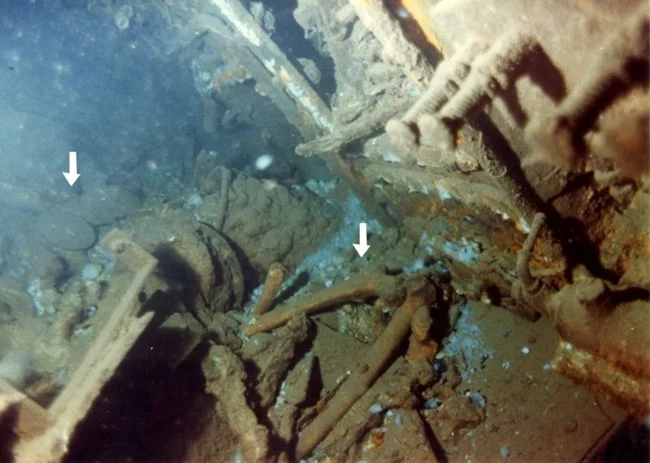
Photo of the aft compartment of Scirè, taken by Italian divers in 1984. White arrows indicate the remains of the dead submariners
The divers raised part of the hatches, two cylinders for the "maiale" and parts of the submarine's hull. In 2002, during joint American-Israeli naval exercises, the remains of the Scirè were damaged. According to various assumptions, either the Americans were trying to raise something from the bottom, or the boat was accidentally hit by anchors. In the end, Italian specialists had to return to the Scirè and carry out a series of works to prevent amateur divers from getting inside the submarine.



